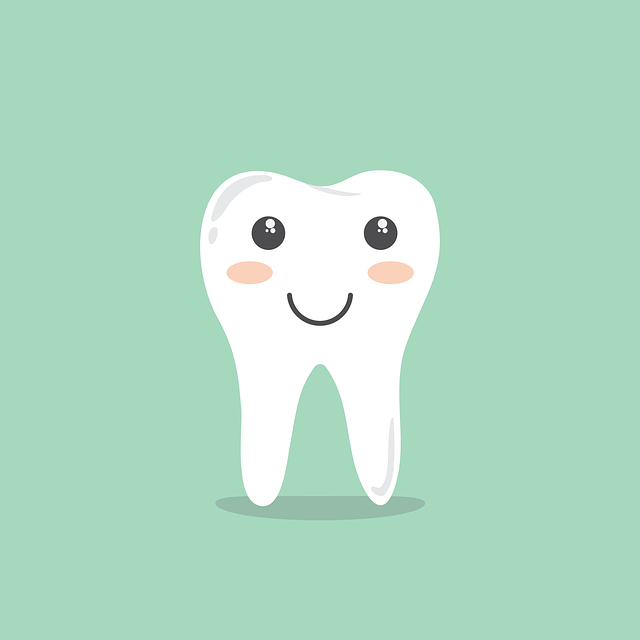Double Protection: Can You Wear a Mouth Guard with a Retainer?
Are you someone who has recently been fitted with both a mouth guard and a retainer? If so, you may be wondering if it’s possible to wear them both simultaneously, without compromising their effectiveness. Well, we have good news for you – in this article, we will dive into the world of dental protection and answer the burning question: Can you wear a mouth guard with a retainer? Get ready to uncover the truth and put your worries to rest as we provide you with a confident, knowledgeable, and neutral perspective on this matter. So, let’s get started and find out if double protection is indeed possible!
1. Understanding the Importance of Mouth Guards and Retainers
When it comes to oral health, mouth guards and retainers play a crucial role in maintaining a healthy smile. These dental appliances are designed to protect your teeth and gums from potential damage, as well as to ensure the alignment and stability of your teeth.
Mouth guards are commonly used during sports activities to prevent injuries to the teeth and jaw. They provide a cushioning effect that absorbs the impact of blows or falls, reducing the risk of broken teeth, lacerations, and even concussions. Mouth guards are available in various types, such as stock mouth guards, boil-and-bite mouth guards, and custom-made mouth guards. Custom-made mouth guards, which are professionally fitted by a dentist, offer the best protection and comfort.
Retainers, on the other hand, are used to maintain the position of your teeth after orthodontic treatment. After braces or aligners have straightened your teeth, retainers help to prevent them from shifting back to their original positions. This is important because teeth tend to have a natural tendency to move, and without the use of retainers, they may gradually shift out of alignment. Retainers can be removable or fixed, depending on your specific needs and the recommendation of your orthodontist.

2. Exploring the Compatibility of Mouth Guards and Retainers
When it comes to protecting your teeth during physical activities, both mouth guards and retainers play crucial roles. However, many individuals wonder if these two dental appliances can be used simultaneously. Let’s shed some light on the compatibility of mouth guards and retainers to help you make an informed decision.
1. Different Purposes:
- A mouth guard is primarily designed to shield your teeth and gums from potential impact, reducing the risk of injuries during activities like sports.
- A retainer, on the other hand, serves the purpose of maintaining the position of your teeth, especially after orthodontic treatment like braces.
2. Limited Compatibility:
While it is possible to wear a mouth guard and a retainer at the same time, it is important to note that they may not fit perfectly together due to their different designs. The bulkiness of a mouth guard can make it challenging to wear a retainer comfortably, and the pressure exerted by the retainer may affect the fit of the mouth guard.

3. The Double Protection Dilemma: Can You Wear Both Simultaneously?
When it comes to protecting your devices, you might be wondering if wearing both a screen protector and a phone case is necessary. The answer depends on your personal preferences and the level of protection you desire. Here, we will explore the pros and cons of using both simultaneously, so you can make an informed decision.
Benefits of wearing both a screen protector and a phone case:
- Enhanced screen protection: By using a screen protector, you add an extra layer of defense against scratches, cracks, and smudges. This can be particularly useful if you often place your phone face down or carry it in a pocket with keys or other sharp objects.
- Added shock absorption: A phone case provides cushioning and absorbs impact in case of accidental drops, reducing the risk of damage to your device. When combined with a screen protector, you create a two-fold protection system that safeguards both the screen and the body of your phone.
- Increased resale value: Having both a screen protector and a phone case can help preserve the condition of your device, making it more attractive to potential buyers if you decide to sell or trade it in the future.
Potential drawbacks of using both simultaneously:
- Added bulk: Wearing both a screen protector and a phone case may make your device slightly bulkier, potentially affecting its sleek design and ease of handling. However, many manufacturers now offer slim and lightweight options that provide adequate protection without sacrificing aesthetics.
- Higher cost: Purchasing both a screen protector and a phone case can increase the overall cost of protecting your device. However, considering the potential expenses of repairing or replacing a damaged device, the investment may be worth it in the long run.

4. Unveiling the Compatibility Factors: Types of Mouth Guards and Retainers
When it comes to protecting your teeth during physical activities or correcting misaligned bites, mouth guards and retainers play a crucial role. However, not all mouth guards and retainers are created equal. Understanding the different types available and their compatibility factors can help you make an informed decision. Here, we explore the various options:
Mouth Guards:
- Stock Mouth Guards: These pre-formed guards are readily available at sporting goods stores, but their fit often leaves much to be desired. They can be bulky and may not provide optimal protection.
- Boil-and-Bite Mouth Guards: These guards are made from a thermoplastic material that softens when boiled. Once softened, they can be placed in the mouth to mold around the teeth, offering a more customized fit.
- Custom-Fitted Mouth Guards: Obtained through dental professionals, these guards provide the best fit and protection. Impressions of your teeth are taken to create a personalized guard that ensures maximum comfort and safeguarding.
Retainers:
- Hawley Retainers: This type of retainer consists of a plastic arch that fits the roof of the mouth and a wire that wraps around the teeth to maintain their position. Hawley retainers are adjustable and can be customized with different color options.
- Essix Retainers: Made of clear plastic, these retainers are less noticeable than Hawley retainers. They fit snugly over the teeth and are easily removable for eating and cleaning.
- Fixed Retainers: Typically used for lower front teeth, these retainers are bonded to the back of the teeth and provide continuous support without the need for removal.
Choosing the right mouth guard or retainer depends on various factors, including your specific dental needs, level of physical activity, and personal preference. Consulting with a dental professional can help you determine which option is most compatible for your individual circumstances.

5. Expert Insights: How to Safely Wear a Mouth Guard with a Retainer
When it comes to wearing a mouth guard with a retainer, it’s important to follow the proper steps to ensure both your safety and the effectiveness of the devices. Here are some expert insights on how to safely wear a mouth guard with a retainer:
- Consult with your orthodontist: Before attempting to wear a mouth guard with a retainer, it is crucial to consult with your orthodontist or dentist. They will assess your specific dental needs and determine if it is safe for you to wear both devices simultaneously. They can provide you with personalized recommendations and instructions to ensure the proper fit and positioning of the mouth guard.
- Select the right mouth guard: Not all mouth guards are compatible with retainers, so it’s important to choose the right one. Opt for a mouth guard that is specifically designed for use with braces or retainers. These mouth guards are typically made from a flexible material that can accommodate the presence of a retainer without compromising comfort or protection.
Furthermore, it is essential to ensure the mouth guard fits properly over your teeth and retainer. Improper fit can lead to discomfort, difficulty breathing, and decreased protection. If necessary, consult with your orthodontist for adjustments or recommendations on specific mouth guards that work best with your retainer.
6. Weighing the Pros and Cons: Double Protection vs. Individual Use
When it comes to protecting your devices and personal information, you may be faced with the decision of whether to opt for double protection or individual use. Each approach has its own set of pros and cons to consider. Let’s weigh them up:
Double Protection:
- Pros: With double protection, you have an added layer of security for your devices and data. This can be particularly beneficial if you frequently access sensitive information or handle confidential data. It provides an extra level of reassurance against potential threats.
- Cons: However, double protection can sometimes be cumbersome and inconvenient. It may slow down your devices or require additional steps for authentication. Additionally, managing and maintaining two layers of security can be time-consuming and may require more technical expertise.
Individual Use:
- Pros: Opting for individual use allows you to have full control over your devices and security measures. You can customize your security settings based on your preferences and requirements. It also eliminates the potential issues that can arise from relying on a third-party security solution.
- Cons: On the other hand, individual use means you solely bear the responsibility for your device’s security. If you overlook any vulnerabilities or fail to implement adequate security measures, you may be at a higher risk of being targeted by malicious actors. It requires a higher level of awareness and vigilance.
Ultimately, the decision between double protection and individual use depends on your specific needs and priorities. Consider the level of security you require, the convenience you are willing to sacrifice, and the technical expertise you possess. Weighing the pros and cons will help you make an informed choice that aligns with your personal circumstances.
7. Final Verdict: Maximizing Comfort and Protection with Mouth Guards and Retainers
When it comes to finding the perfect mouth guard or retainer, comfort and protection are key. Whether you are an athlete looking to safeguard your teeth during rigorous physical activity or simply someone who wants to maintain proper dental alignment, these oral devices offer a range of benefits. By understanding the differences between mouth guards and retainers, you can make an informed decision that maximizes both comfort and protection.
Mouth guards are primarily designed to protect your teeth, gums, and jaw during contact sports or activities that carry a risk of dental injuries. Made from durable materials such as silicone or thermoplastic, they act as a cushion against impact, distributing forces evenly to minimize the risk of tooth fractures or dislocations. With a snug fit that molds to your teeth, mouth guards provide a comfortable and secure barrier, preventing injuries to your lips, cheeks, and tongue. Additionally, mouth guards can also help reduce the incidence of concussions by absorbing and dispersing the energy from a blow to the head.
- Offer protection against dental injuries during contact sports
- Prevent tooth fractures and dislocations
- Provide a comfortable and secure fit
- Protect lips, cheeks, and tongue
- Reduce the risk of concussions
In contrast, retainers focus on maintaining dental alignment and preventing teeth from shifting after orthodontic treatment. They are custom-made to fit your teeth and are typically made from a clear plastic material. Retainers work by exerting slight pressure on your teeth, keeping them in their new positions and preventing any unwanted movement. By wearing a retainer as prescribed by your orthodontist, you can ensure the long-term success of your orthodontic treatment and maintain a beautifully aligned smile.
- Maintain dental alignment after orthodontic treatment
- Prevent teeth from shifting
- Custom-made to fit your teeth
- Made from clear plastic for discretion
- Ensure the long-term success of orthodontic treatment
Frequently Asked Questions
Q: Can you wear a mouth guard with a retainer?
A: Absolutely! It is possible to wear a mouth guard with a retainer, providing double protection for your teeth.
Q: Why would someone need to wear a mouth guard and a retainer simultaneously?
A: People who participate in sports or other physical activities often wear a mouth guard to protect their teeth from potential injuries. On the other hand, a retainer is typically used to maintain the alignment of teeth after orthodontic treatment. If you have both requirements, wearing both appliances together can be beneficial.
Q: Do mouth guards and retainers serve different purposes?
A: Yes, they do. A mouth guard acts as a cushion, absorbing and distributing the impact of blows or falls to the face and jaw. It provides protection against broken teeth, lip injuries, and jaw fractures. On the other hand, a retainer is specifically designed to keep your teeth in their proper position following braces or other orthodontic treatments.
Q: Can wearing a mouth guard affect the effectiveness of a retainer?
A: While wearing a mouth guard may slightly impact the effectiveness of a retainer, it is usually minimal. The retainer may experience slight pressure or movement due to the presence of the mouth guard, but this is generally not significant enough to cause any major issues.
Q: Are there any specific types of mouth guards that are compatible with retainers?
A: Yes, certain types of mouth guards are more suitable for use with retainers. Custom-made mouth guards, which are created by dental professionals to fit your specific dental structure, tend to be the best option. These can be designed with the retainer in mind, allowing for a more comfortable fit and effective protection.
Q: How can someone wear both a mouth guard and a retainer comfortably?
A: To ensure comfort while wearing both a mouth guard and a retainer, it is essential to have a proper fit for both appliances. Consulting with a dentist or orthodontist is recommended, as they can provide guidance on selecting the right mouth guard and adjusting the retainer if necessary.
Q: Is it necessary to wear both a mouth guard and a retainer simultaneously?
A: Wearing both a mouth guard and a retainer simultaneously is not always necessary. If you are engaging in physical activities that pose a high risk of dental injury, it is advisable to wear a mouth guard. However, in situations where there is no significant risk, it may be acceptable to remove the retainer temporarily and wear only the mouth guard.
Q: How should one care for both a mouth guard and a retainer?
A: Proper care is crucial for maintaining the hygiene and longevity of both appliances. Rinse the mouth guard with water after each use and brush it gently with a toothbrush and toothpaste regularly. Retainers should be cleaned with a mild soap or retainer cleaner and stored in a clean, dry case when not in use. Regular dental check-ups can also help ensure the health and functionality of both the mouth guard and the retainer.
Closing Remarks
In conclusion, the answer is yes, you can wear a mouth guard with a retainer. By doing so, you can enjoy double protection for your teeth, whether you’re playing sports or grinding your teeth at night. It is important to ensure that both the mouth guard and retainer fit properly to avoid any discomfort or damage. Remember to consult your dentist or orthodontist for personalized advice on the best way to wear these dental devices simultaneously. With the right fit and proper care, you can confidently safeguard your teeth while maintaining your orthodontic treatment.






